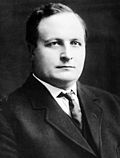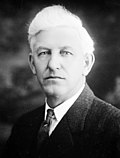
The governor of North Dakota is the head of government of the U.S. state of North Dakota. The governor is the head of the executive branch of North Dakota's state government and is charged with enforcing state laws.
Contents
There have been 32 governors since North Dakota became a state, serving 33 distinct terms, with William Langer having been elected to multiple terms. The current officeholder is Republican Kelly Armstrong.

































